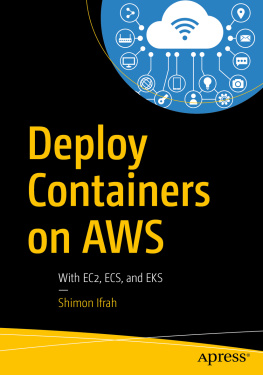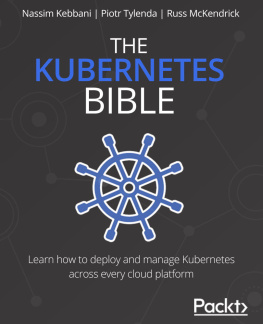Shimon Ifrah
Melbourne, VIC, Australia
Any source code or other supplementary material referenced by the author in this book is available to readers on GitHub via the books product page, located at www.apress.com/978-1-4842-5100-3 . For more detailed information, please visit www.apress.com/source-code .
ISBN 978-1-4842-5100-3 e-ISBN 978-1-4842-5101-0
https://doi.org/10.1007/978-1-4842-5101-0
Shimon Ifrah 2019
Apress Standard
Trademarked names, logos, and images may appear in this book. Rather than use a trademark symbol with every occurrence of a trademarked name, logo, or image we use the names, logos, and images only in an editorial fashion and to the benefit of the trademark owner, with no intention of infringement of the trademark. The use in this publication of trade names, trademarks, service marks, and similar terms, even if they are not identified as such, is not to be taken as an expression of opinion as to whether or not they are subject to proprietary rights.
While the advice and information in this book are believed to be true and accurate at the date of publication, neither the authors nor the editors nor the publisher can accept any legal responsibility for any errors or omissions that may be made. The publisher makes no warranty, express or implied, with respect to the material contained herein.
Distributed to the book trade worldwide by Springer Science+Business Media New York, 233 Spring Street, 6th Floor, New York, NY 10013. Phone 1-800-SPRINGER, fax (201) 348-4505, e-mail orders-ny@springer-sbm.com, or visit www.springeronline.com. Apress Media, LLC is a California LLC and the sole member (owner) is Springer Science + Business Media Finance Inc (SSBM Finance Inc). SSBM Finance Inc is a Delaware corporation.
Introduction
Writing a book about AWS is a complex task because AWS has more than 100 cloud services! In fact, most of the services have enough depth to be covered in a full book on its own.
When I took on the task of writing this book, I wanted to stay focused and deliver a book that covered AWS container services only, and I believe I have managed to do that.
This book covers the main container services in AWS.
Amazon Elastic Container Registry (Amazon ECR)
Amazon Elastic Container Service (Amazon ECS)
Amazon Elastic Kubernetes Service (Amazon EKS)
EC2 Docker container host
This book is for people who dont have a lot of knowledge of AWS as well as people who have experience working with Azure who want to learn AWS. You dont need to be a developer to read this book because the objective is to learn how to deploy and manage the services and not to use an application development lifecycle approach.
I have designed this book in a way that any person with working experience in IT and with a little prior AWS background can pick it up and get started with AWS container services.
The first five chapters cover each service in-depth. The hands-on examples will teach you how to deploy the service and run Linux and Windows containers using the AWS management console or the AWS CLI.
The last five chapters focus on securing your users and your code, backing up and recovering your data, and scaling each service using AWS best practices.
This book is also for beginners, engineers, and architects who want to get started with AWS containers using a step-by-step approach while gaining hands-on experience.
To use this book, you will need to know how to use Docker and run containers on Docker Desktop or Docker Engine on Windows Server or Linux.
The most complex parts in this book are about the Amazon Elastic Kubernetes Service, specifically where I show how to set up and deploy an EKS cluster and worker nodes.
I recommend you follow the steps in the EKS chapters without skipping anything as each step is needed to complete the next one and deploy the EKS cluster and worker nodes.
You can also use AWS Free Tier to reduce some of the costs of running AWS services; however, some of the AWS container services are not covered under the Free Tier offering.
When I started to work on this book with my publisher in late 2018, I wanted to write a book that would
In other words, my goal was to write a book that covered all the Amazon AWS container services from a hands-on perspective while being practical and easy to understand.
Many AWS books use an application development lifecycle approach in AWS; however, with that approach, the reader can get lost in the code and miss the primary purpose of learning the fundamentals.
In this book, I focused on each container service offering, covering it from the ground up. Youll learn how to do the following with each container service:
Learn : Youll learn the basics of each service and its requirements.
Deploy : Youll deploy the service in AWS using a step-by-step approach and see examples.
Scale : Youll scale the service capacity using AWS best practices.
Manage : Youll manage and secure the service using AWS best practices.
This approach allows you to focus on the task on hand and learn how to deploy containers on AWS, and it gives you all the tools needed to deploy a single container or multiple containers on a large scale.
Youll gain valuable knowledge and experience with this approach to learning, deploying, scaling, and managing containers on AWS.









